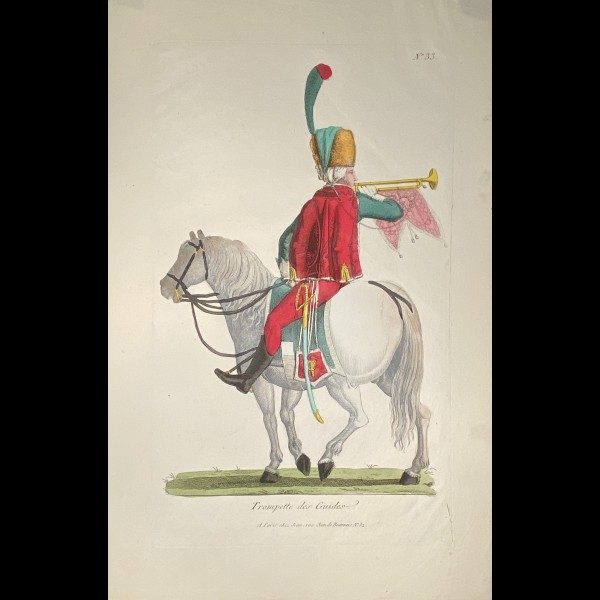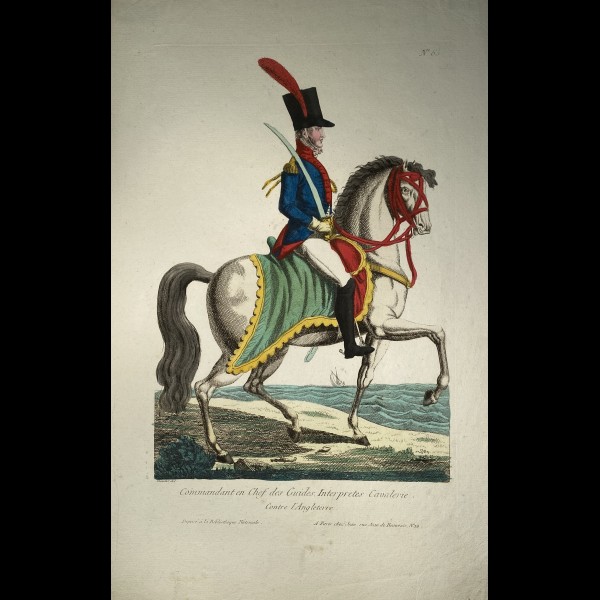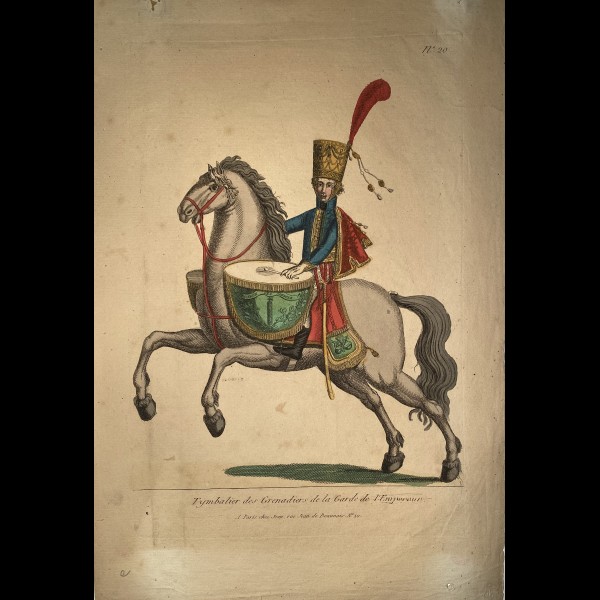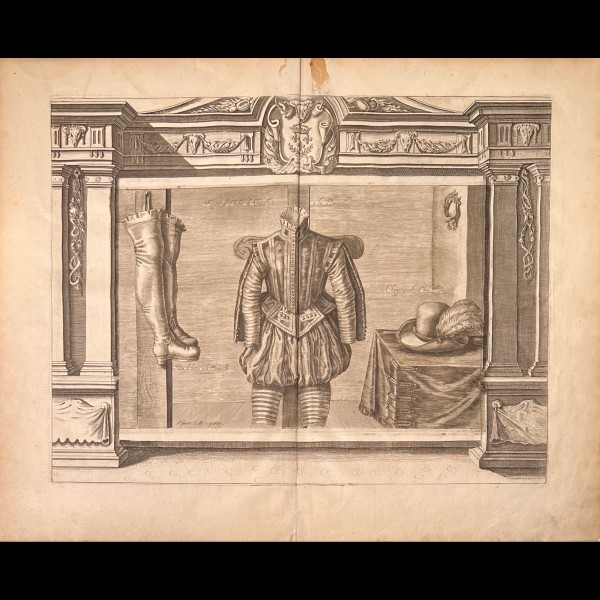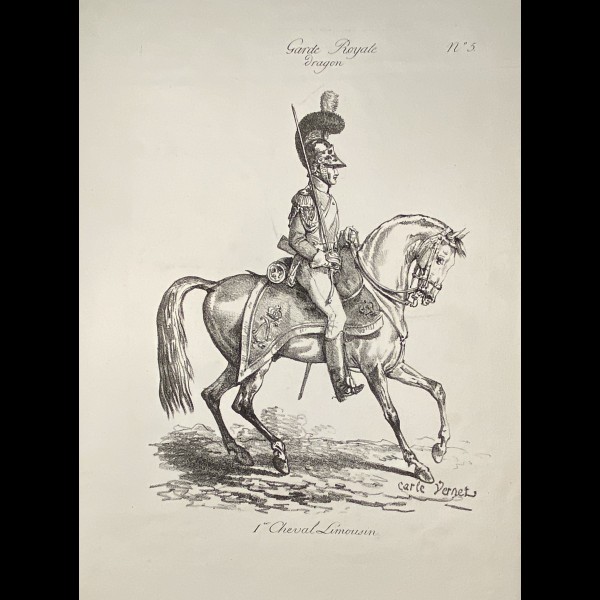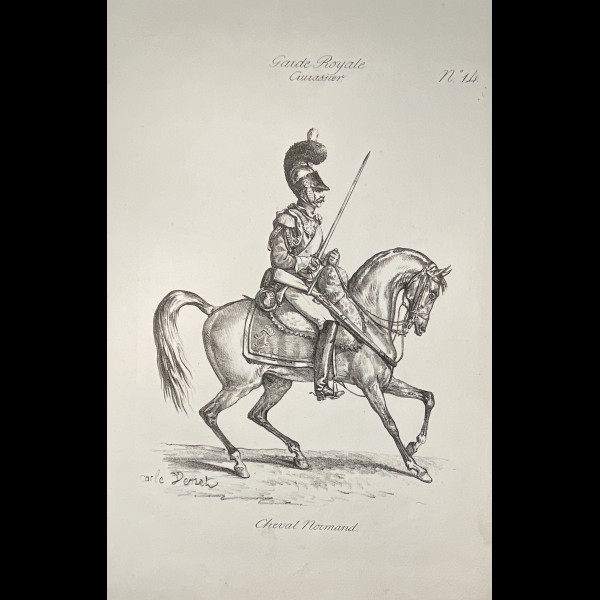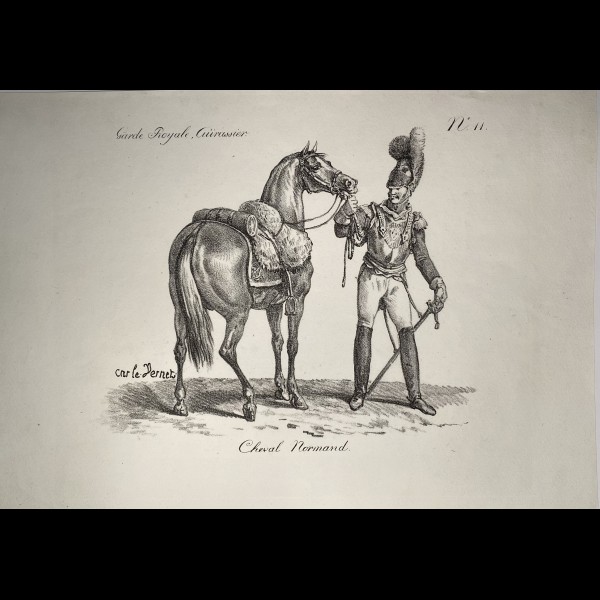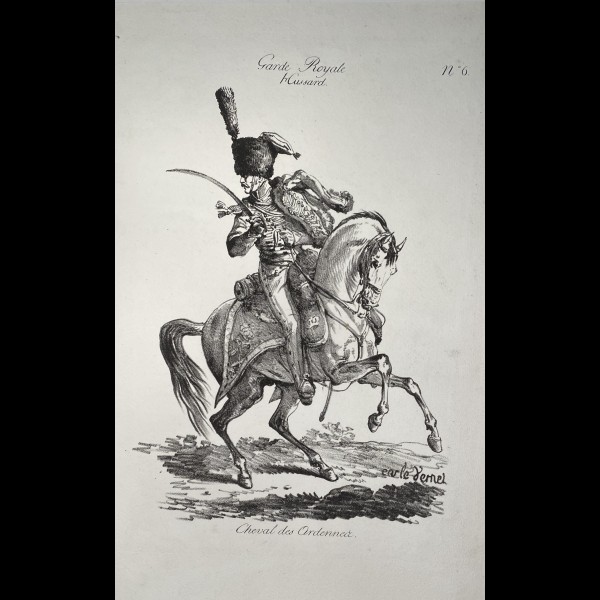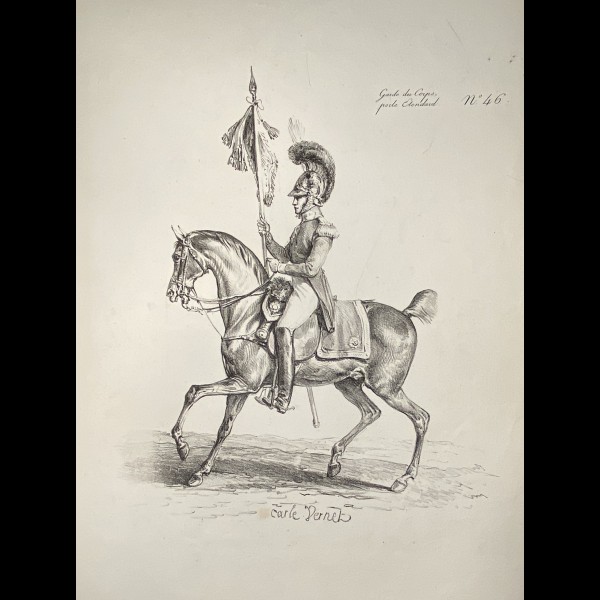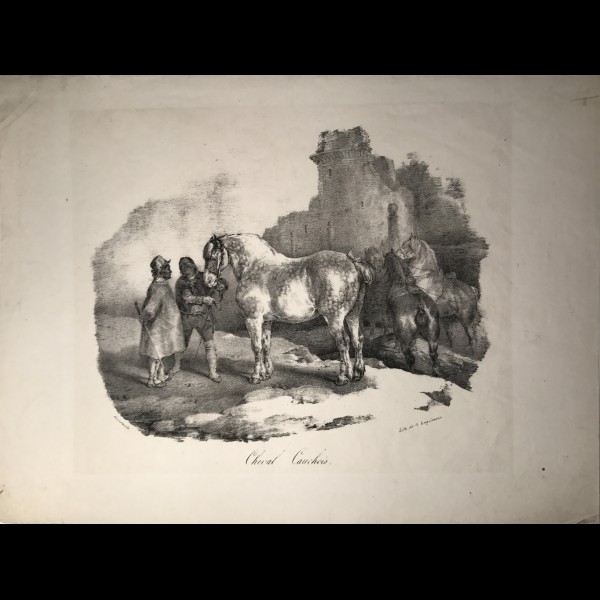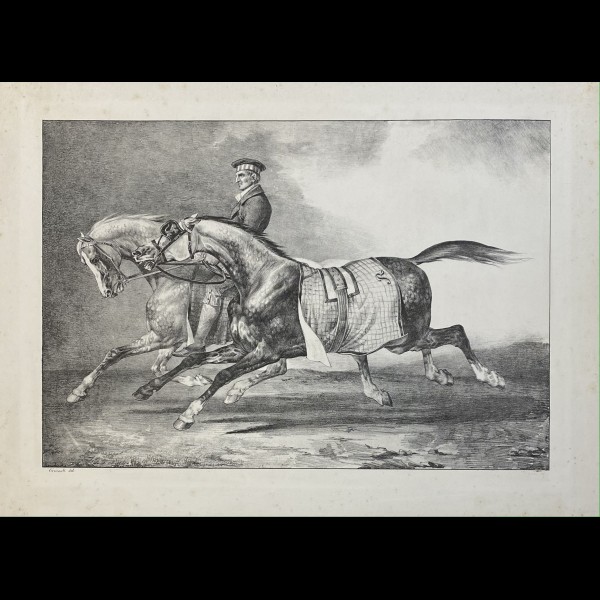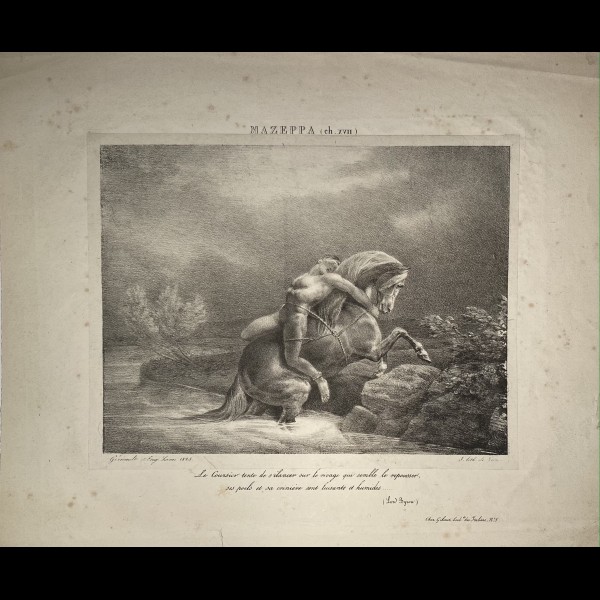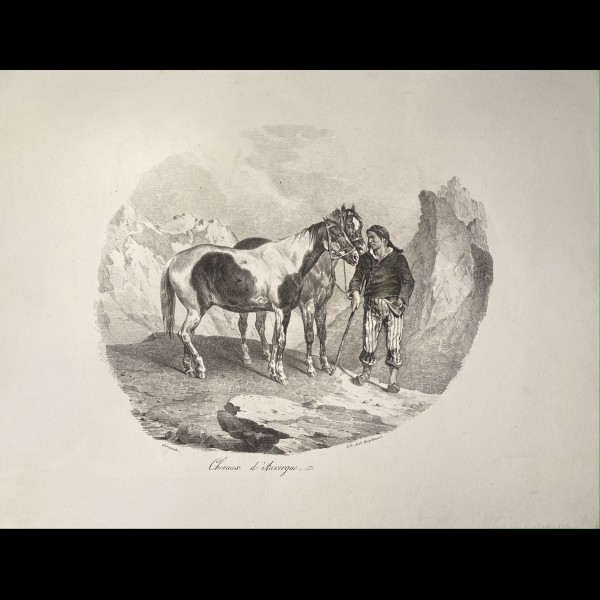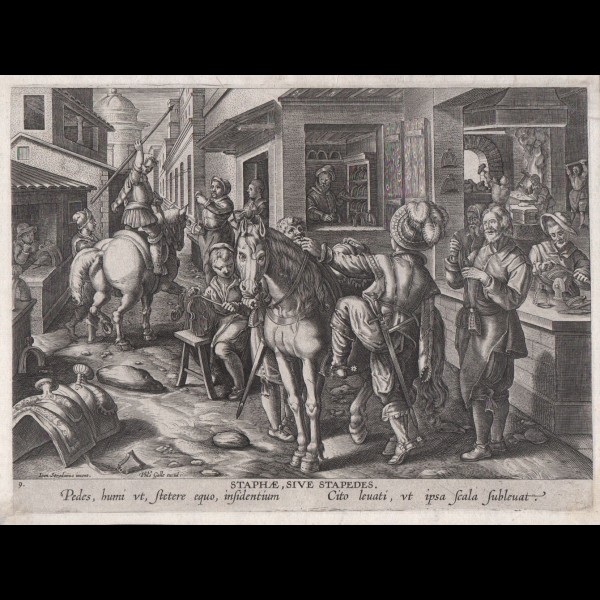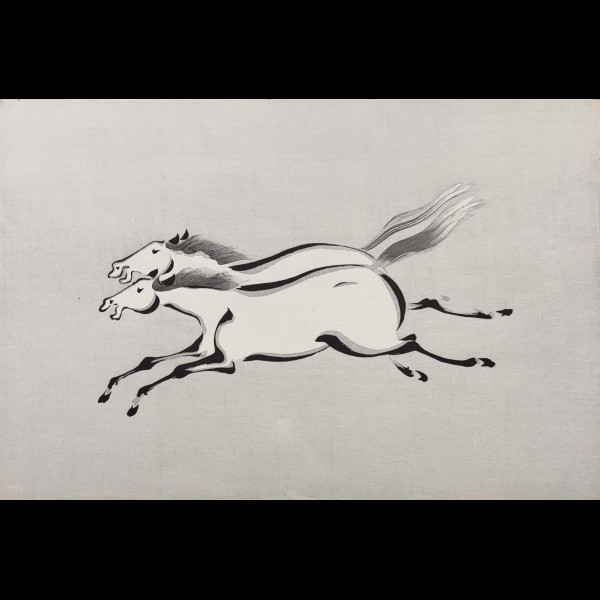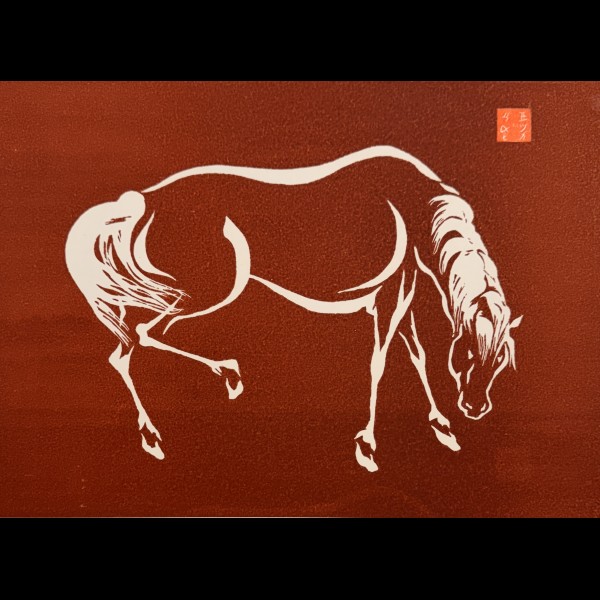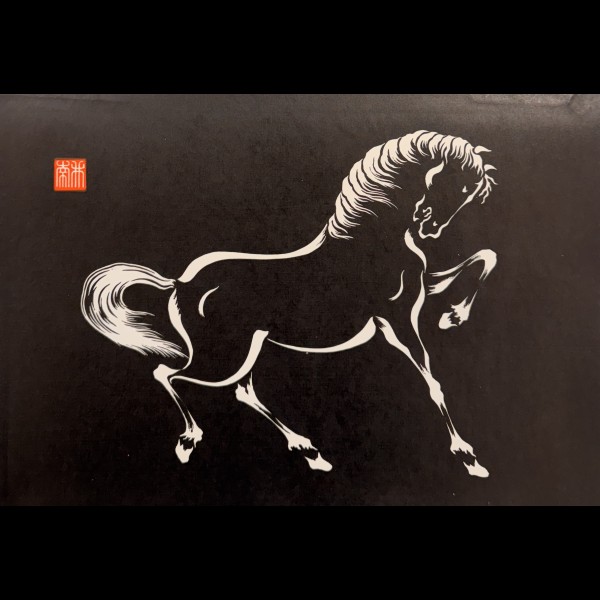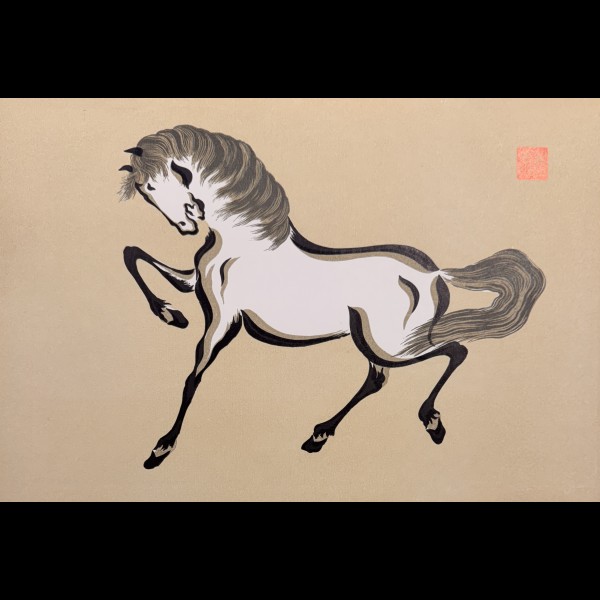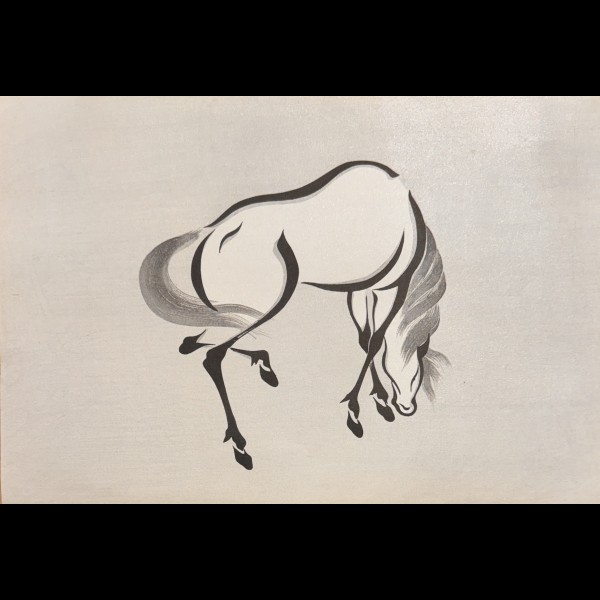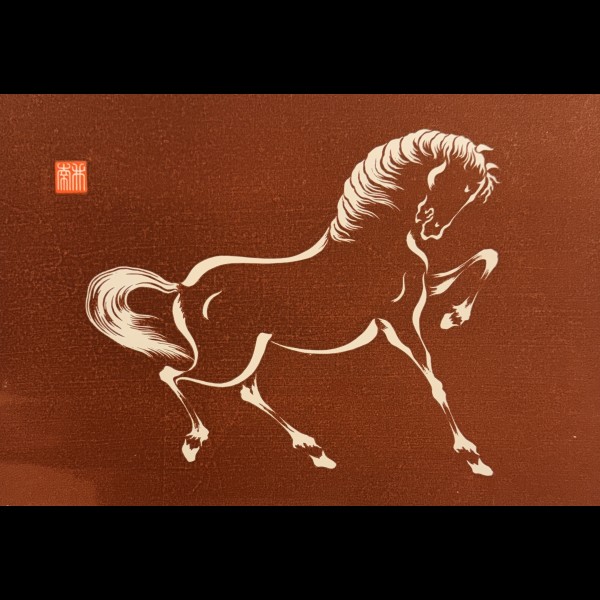LES JOUEURS DE POLO
JEANNIOT PIERRE-GEORGES ( 1848-1934 )Good proof with large margins, countersigned.Slight yellowing of the outer edges...
SAUMUR ECOLE DE CAVALERIE, TRAVAIL INDIVIDUEL
ADAM ALBERT ( 1833-1900 )"Important work of a careful execution, interesting not only from the point of view of the exercises represented, but also to that of the uniforms of the cav [alery] at the end of the Second Empire"(Mennessier de la Lance). Imprimerie Lemercier Paris, 1869 Reference: Mennessier of the Lance I, 436..
TROMPETTES DES GUIDES
CHEZ JEAN, EDITEUR ( CA.1820-1830 )Parisian imagery on laid paper with all margins, stamped on the back of the collection of Dr Hutin.Ca.1820-1830..
COMMANDANT EN CHEF DES GUIDES. INTERPRETES CAVALERIE. CONTRE L'ANGLETERRE
CHEZ JEAN, EDITEUR ( CA.1820-1830 )Parisian imagery on laid paper with all margins, stamped on the back of the collection of Dr Hutin.Ca.1820-1830..
TYMBALIERS (SIC) DES GRENADIERS DE LA GARDE DE L'EMPEREUR
CHEZ JEAN, EDITEUR ( CA.1820-1830 )Parisian imagery on laid paper bearing stamp on the back of the Dr Hutin collection.Ca.1820-1830Uniform yellowing and small tear in the upper margin...
TROMPETTE DU 9EME REGIMENT DE DRAGONS
CHEZ JEAN, EDITEUR ( CA.1820-1830 )Parisian imagery on laid paper, stamped on the back of the Dr Hutin collection.Ca.1820-1830Proof cut to the limit of copper on the outer edges...
FIGURE DE L'HABIT DE CHEVALLIER (SIC) A LA PLUVINELLE
DE PASSE CRISPIJN ( 1564 ? - 1637 )Good impression, usual median fold, slightly yellowed borders, three old restorations in the large margins not reaching the subject.From : " L'instruction du Roy en l'exercice de monter a cheval . Par messire Antoine de Pluvinel, son soubs-gouverneur, conseiller en son Conseil d'Estat, chambellan ordinaire, & son escuyer principal. Lequel respondant a Sa Majesté luy faict remarquer l'excellence de sa methode pour reduire les chevaux en peu de temps à l'obeyssance des justes proportions de tous les plus beaux airs & maneiges. Le tout enrichy de grandes figures en taille-douce, representant les vrayes & naïsves actions des hommes & des chevaux en tous les airs, & maneiges, courses de bague, rompre en lice, au quintan, & combattre à l'espee, ensemble les figures des brides, les plus necessaires à cet usage, desseignees & gravees par Crispian de Pas le jeune ""A Paris, chez Michel Nivelle, ruë Sainct Jacques, à l'Escu de Bretagne, devant l'eglise Sainct Benoist. M. DC. XXV. Avec privilege du Roy, pour six ans"1625This famous treatise on riding, supported by philosophical remarks, is written in the form of interviews for the attention of the young Dauphin (future Louis XIII). To introduce him to the art of "reducing horses to obedience in a short time", Antoine de Pluvinel softened the teaching he himself received in Italy. It is illustrated by Crispin de Passe, whom Pluvinel met in Holland during one of his diplomatic missions...
LE DEPART POUR LA CHASSE
TAQUOY MAURICE ( 1878-1952 )Countersigned proof dated 1904.Slight yellowing at the opening of an old matboard, small soiling in the right margin...
LES JOCKEYS
BIAIS MAURICE (1872-1926)Beautiful proof on vellum edited by Sagot, Paris. Ca.1910 Middle fold, registration marks, hole punches in the upper margin, folds lower margins..
CHEVEAUX (SIC ) DE FERME
GERICAULT THEODORE (1791–1824)Lithograph of the suite: Five lithographs, four various subjects (Delteil: 73 to 77) State II / IV, rare, with the address of Mme Hulin but before the name of Engelmann was erased. 1823 Delteil: 73..
CHEVAL CAUCHOIS
GERICAULT THEODORE (1791–1824)Light dusting, tiny tear in the top margin, fold in the lower right corner..
DEUX CHEVAUX GRIS POMMELE QUE L'ON PROMENE
GERICAULT THEODORE (1791–1824)Beautiful and large lithograph executed with two hands by Gericault and Cogniet.Variation of another piece by Gericault (cf. Delteil: 35).State II/II after removal of Villain's address at the bottom right.1822Delteil: 83Some scattered marginal foxing, two tiny tears in the upper border...
MAZEPPA
GERICAULT THEODORE (1791–1824)In collaboration with Lami. Lithograph from a set of six plates for the works of Byron, four of which are by Gericault and Lami. State II / III with the capital C. Delteil: 94 Proof on chine appliqué, scattered rednesses, short tear in the bottom margin, an oblique fold in the upper right margin and two oblique folds in the lower right corner...
CHEVAL DE MECKLEMBOURG
GERICAULT THEODORE (1791–1824)Lithography of the suite: Study of lithographed horses (Delteil: 46 to 57) State II / IV with the letter but before the number and the erasure of the name Engelmann. 1822 Delteil: 47..
CHEVAUX D'AUVERGNE
GERICAULT THEODORE (1791–1824)From the following: Study of lithographed horses. Rare proof in perfect condition with the letter and before the stone break on the left. Delteil: 48..
STAPHAE, SIVE STAPEDES
STRAET JAN VAN DER DIT STRADAN DIT STRADANUS AFTER (1523 -1605)Plate 9 from the Nova Reperta series.State 2/4 with the number 9 in the lower left corner to the address of Philippe Galle, before its replacement by that of Johannes Galle.(The series was first published around 1591 by Philippe Galle in Antwerp and was successively republished by Karel de Mallery, after 1612, Theodoor Galle, before 1636 and Johannes Galle before 1677.)Very beautiful proof on laid paper watermarked with a double crowned C, the corners reinforced.ca.1591New Hollstein: 331The Nova Reperta series, that is to say new discoveries (or inventions), illustrates certain notable discoveries and inventions for Europe at the end of the 16th century.These repertae are highlighted and “situation” by Stradan in a lively and dramatic way, according to the advice given by humanist pedagogues like Erasmus and of which Jean-Claude Margolin gives an analysis in his: "About Stradan's Nova reperta" in "Esthétiques de la nouveauté à la Renaissance",Franck Lessay et François Laroque (dir.), Presses Sorbonne Nouvelle Collection, Paris, 2001"Here is an outdoor scene, more precisely a street scene, where we see two riders: one (on the left), in front of a shop, is mounted on his horse (is he going to get off, or is he getting back on?), the other (on the right) is preparing to get back on, his left foot already placed on the stirrup (scala), seeming to take leave of a shopkeeper who is standing near him. He apparently obtained some practical object, or rather some essential ointment. What is it about? The title indicates this, as the Latin legend of the subscription will indicate more precisely. But these Latin, or Latin-Greek, terms, unknown to Cicero or Caesar, are not immediately assimilable, even if the radical sto-48 from which they are formed gives an idea of stability, firmness or plumbness (in this case, of the feet). They actually mean so-called pedicle herbs49 which we also call filopodia, that is to say herbs which relieve the feet of these riders, wearing narrow and uncomfortable boots, and enduring long hours or long days on horseback, without being able to let them rest in the open air. Here is how the author of the Latin legend describes and interprets the image: Pedes, humi ut, stetere equo, insidentium, cito levati, ut ipsa scala sublevat (“Having dismounted, the riders, as soon as they remount, are quickly relieved, the stirrup itself delivering them from their suffering”)."..
DEUX CHEVAUX GALOPANT
ARTISTE SOSAKU HANGASosaku Hanga print of the 50sBeautiful print on a slightly micaceous background, short tear in the lower border.Nishiki-eOban..
CHEVAL SUR FOND ROUGE BROUTANT
ARTISTE SOSAKU HANGASosaku hanga from the 1960sNice print.Nishiki-e..
CHEVAL BROUTANT
ARTISTE SOSAKU HANGASosaku Hanga print of the 50sNice proof on a micaceous backgroundNishiki-eOban..
MONOMANES - LE CHASSEUR PARISIEN
DAUMIER HONORÉ (1808-1879)Epreuve published i le CharivariDelteil : 863..




